#cerd
Text
3066th Meeting, 112th Session, Committee on the Elimination of Racial Discrimination (CERD).
Consideration of Moldova - Watch the 3066th Meeting, 112th Session, Committee on the Elimination of Racial Discrimination (CERD).
#ohchr#cerd#plenary session#un human rights council#plenary meeting#racial disparity#racial discrimination#racial divide#racial bias#moldova
0 notes
Text
Application of the International Convention for the Suppression of the Financing of Terrorism and of the International Convention on the Elimination of All Forms of Racial Discrimination (UKRAINE v. RUSSIAN FEDERATION) Case Note
AUTHOR’S NOTE: This is an analysis of the ICJ’s judgement on merits in the case of Application of the International Convention for the Suppression of the Financing of Terrorism and of the International Convention on the Elimination of All Forms of Racial Discrimination, rendered on 31 January 2024. This is a summary of the judgement, with the occasional comment or analysis. This is only half the…
View On WordPress
#CERD#Convention on the Elimination of All Forms of Racial Discrimination#crimea#donetsk#dpr#financing#ICJ#ICSFT#International Convention for the Suppression of Financing of Terrorism#International Court of Justice#investigation#judgement#legal assistance#lpr#luhansk#MH17#military#prosecution#russia#russian federation#terrorism#terrorism financing#ukraine
1 note
·
View note
Text
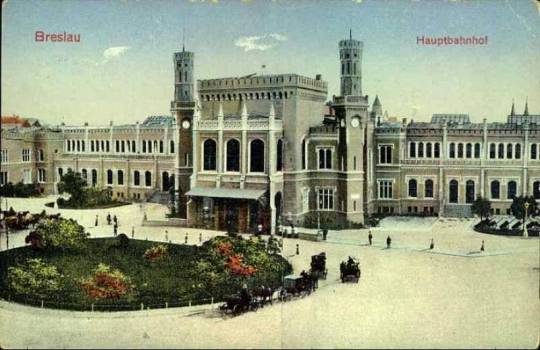

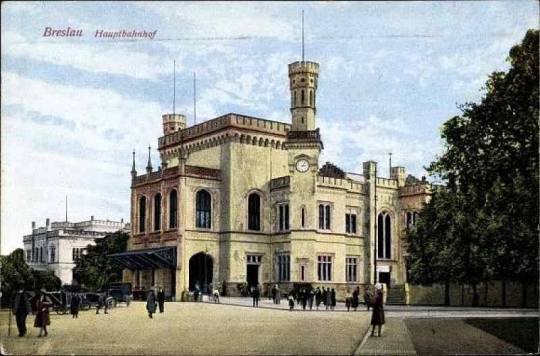



Breslau, Hauptbahnhof - today Wroclaw, main railway station building, Poland.
#dworzec gowny#Hauptbahnhof#Lower Silesia#Dolny Śląsk#Niederschlesien#pocztówka#widokówka#post card#postcard#cerd#kartka#Ansichtskarte#railway station#Polska#Poland#Polen#Polonia
0 notes
Text
Les Comédiens-Routiers - 1932
Les Comédiens-Routiers – 1932

View On WordPress
0 notes
Text
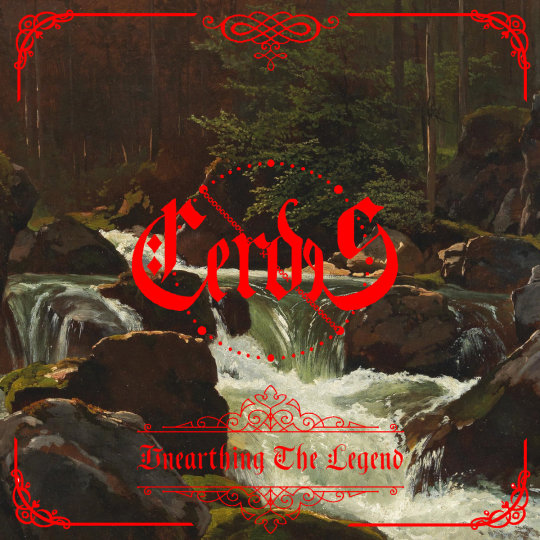
Cerdes
Unearthing the Legend (2020)
Medieval dungeon synth / Ambient dungeon synth
1 note
·
View note
Text
2ο φεστιβάλ «Συλλογικοί Βηματισμοί» από την Terra Verde
2ο φεστιβάλ «Συλλογικοί Βηματισμοί» από την Terra Verde
9 & 10 Σεπτεμβρίου στοv προμαχώνα του Σαν Σαλβατόρε από τις 18:00
Οι Εκδόσεις Ραδάμανθυς συμμετέχουν με έκθεση βιβλίου στην πρωτοβουλία της Συλλογικότητας για το Εναλλακτικό και Αλληλέγγυο Εμπόριο Terra Verde (Γη Πράσινη), η οποία διοργανώνει το 2ο φεστιβάλ «Συλλογικοί Βηματισμοί», την Παρασκευή και το Σάββατο, 9 & 10 Σεπτεμβρίου 2022, στοv προμαχώνα του Σαν Σαλβατόρε από τις 18:00.
Για δύο…

View On WordPress
#φεστιβάλ συλλογικοί βηματισμοί#Κρήτη#Χανιά#εκδόσεις Ραδάμανθυς#εκδόσεις βιβλίων#εκδοτικοί οίκοι#Terra cerde
0 notes
Text
FINALS!!!!!!!


Monster Stats & Propaganda Under the Cut:
Kuriboh is used by Yugi Mutou/Yami Yugi. Its stats are the following:
Attribute: DARK
Level: 1
Type: FIEND / EFFECT
Effect Type: QUICK
Effect (according to the anime): "During your opponent's turn, at damage calculation: You can discard this card; you take no battle damage from that battle (this is a Quick Effect)."
ATK / DEF: 300 / 200
Propaganda:
Turn 18 of the duel between Kaiba and Yugi in the Duelist Kingdom arc - INFINITE KURIBOH WALL.
There's one part in Duelist Kingdom (when the rules didn't matter) where the Kuribohs multiply and there's an endless amount of them.
He's cute.
Have you seen this adorable fluff ball?! He's adorable and will take a hit for you because he loves you.
It's just a small, fluffy guy. One that Yugi and Atem used destroy many an opponent, an example of how even a monster that seems useless can be used to topple an opponent. But mostly I'm submitting him because he's a small, fluffy guy. Very iconic, even if it's not the strongest monster.
In my opinion, he's the mascot of DM. Of the whole series, really. That's why there's on in each series. But you cannot go wrong with the OG!!
Slifer the Sky Dragon is used by Malik Isthar ("Marik Ishtar" in the dub) through Doll/Pantomimer ("Strings" in the dub) and Yugi Mutou/Yami Yugi. Its stats are the following:
Attribute: DIVINE
Level: 10
Type: DIVINE-BEAST
Effect Type: TRIGGER / CONTINUOUS
Effect (according to the anime): "Everytime the opponent summons creature into the field, the point of the player's cerd is cut by 2000 points. X stands for the number of the player's cerds in hand."
ATK / DEF: X000 / X000
Propaganda:
I think the answer is pretty obvious.
#yugipoll#round 7#finals#kuriboh#yugi mutou#yami yugi#marik ishtar#malik ishtar#doll#pantomimer#strings#duel monsters#yu-gi-oh#yu-gi-oh duel monsters#yugioh#yugioh duel monsters#poll bracket#poll tournament#polls
113 notes
·
View notes
Text
El dolor de cabeza se quita con una pastilla,
Pero sentirte como un cerd@ dura bastante tiempo.
46 notes
·
View notes
Note
Sut dych chi, could you explain the difference between "dw i" a "dw i'n" please, Diolch.
It's whether you need to put 'yn' in front of the next word. If you do, the contraction is "Dwi'n", like how in English we say "it's" instead of "it is".
As for when you need that 'yn', you put it in front of verbs, adjectives and adverbs, but not nouns. Also not anything else - you don't use it in front of prepositions, for example. "I'm on the bridge" would therefore be "Dwi ar y bont", because 'on' (ar) is a preposition. "I'm walking on the bridge", though, would be "Dwi'n cerdded ar y bont", because 'walking' (cerdded) is a verb.
Does that make sense? I hope it does, HMU if you're still confused
163 notes
·
View notes
Text
A Thing Of Vikings Chapter 47: Do You Hear Something?
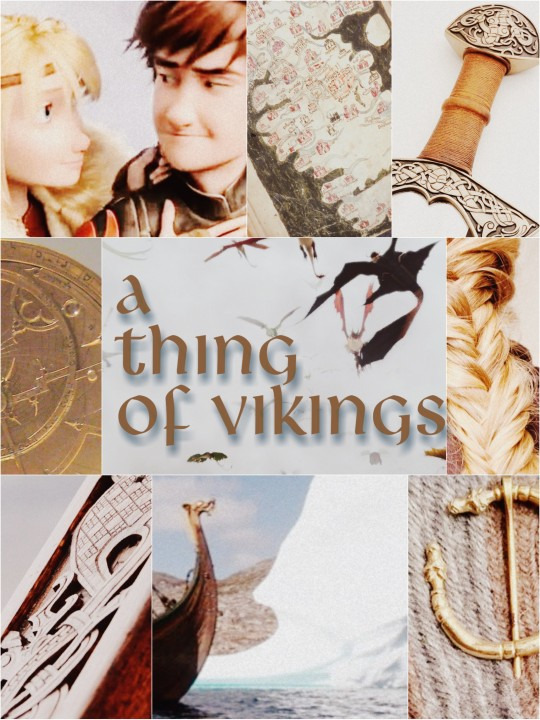
Chapter 47: Do You Hear Something?
Pre-Viking Eirish society was, in technical terms, a sophisticated primitive society; it had formalized law, culture and social structures, but also lacked several elements associated with complex societies, specifically a written language, urban centers, and currency. The social structure of the Eirish, in particular, was based on three axes, and where the individual Eirish person fell on them.
The primary axis was familial; an Eirish family was all of the related members living under one roof (a fine), and then extending out to one-degree extended family (sept), and there to blood-tied clan. Related clans would come together to form a tribe (a tuath), related tribes would form a kingdom (dál), and geographically proximate kingdoms would form a province (coiced), of which there were classically five.
The second axis was occupational, and consisted of three groups: the warriors (láech / láecheanna), the craftsmen (cerd / cerdí), and the laborer farmers (aithech / aithecheanna). The farmers produced the food required to survive, and were protected by the warriors. The warriors protected the other two groups, but also ruled over them. And the craftsmen produced the goods and services needed to keep the society running; this group included not only smiths, carpenters, masons and others, but also the lawkeepers, priests, musicians, scholars, monks, physicians and other such individuals.
The third axis was social class, consisting of five ranks.
At the top were the rulers, the kings (ríthe), ranging from clan chief (rí) to tribal chief (rí tuaithe) to king of the kingdom (rí ruirí), to province king (rí ruírech), and then to High King (ard rí).
Second in rank were the privileged (flaith), essentially the aristocracy. These individuals were the designated managers of the land, and controlled who settled where and did what. While legally the land was held by the tribe as a whole and the privileged class merely managed it on their behalf, they still historically received the bulk of of the arable land, controlled who worked it, and worked the public resources for their private benefit.
Third in rank were the non-noble freemen with property (aire), usually land or flocks. There were two subclasses, both related to the occupations in the second axis—warriors and professionals, who engaged in privileged, trained crafts and skills, such as priest, law-keeper, physician, fili or other such skill.
Fourth in rank were the freemen without property (aithech); they were not privileged themselves and did not hold property, and worked the land or flocks granted by the upper ranks as tenants.
Fifth in rank were the non-free. There were three subdivisions of this category:sen-cleith, bothach & fuidir. Bothach were essentially clanless individuals allowed to squat on tribal lands at the sufferance of the tribe. Sen-Cleith were the personal servants and laborers of the Flaith classes, and the flaith members treated them as little better than the daer-fuidiri. The fuidir was the lowest of the low, bound to the land and desires of their owning Flaith. The daer-fuidiri being composed of debt-thralls, war-captives, and other human chattel, The daer-fuidiri were little more than property—indeed, female thralls, referred to as bondsmaids (cumhal), were a standard unit of currency against which other valuable items were measured in Eirish law. Finally, there were rare exceptions in the form of tribeless individuals, saer-fuidir, who were allowed to squat on unsettled land at the sufferance of the local Flaith, but otherwise had no rights before the law to speak of.
—A History Of The Isles, Oxford, England, 1591
AO3 Chapter Link
~~~
My Original Fiction | Original Fiction Patreon
15 notes
·
View notes
Text
3065th Meeting, 112th Session, Committee on the Elimination of Racial Discrimination (CERD).
The Committee on the Elimination of Racial Discrimination (CERD) is the body of independent experts that monitors implementation of the Convention on the Elimination of All Forms of Racial Discrimination by its States parties.
Watch the Consideration of Moldova -3065th Meeting, 112th Session, Committee on the Elimination of Racial Discrimination (CERD)!
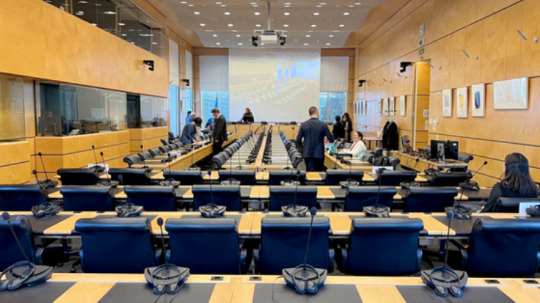
#moldova#exclusions and restrictions#racial bias#racial discrimination#human rights#un human rights council#committee on the elimination of racial discrimination#plenary session#plenary meeting#cerd
0 notes
Text
Very Angry Commentary on the State of Race Relations in Australia
In 2017 the United Nations Committee on the Elimination of Racial Discrimination (CERD), whose raison d'etre is to take action against injustice related to racial discrimination, recommended that Australia “accelerate its efforts to implement the self-determination demands of Indigenous peoples, as set out in the “Uluru statement from the heart”.
The state of the rights and quality of life of indigenous people in Australia should be taken as an international embarrassment and action taken immediately to correct it. Whether it is a voice or a treaty, the status quo cannot continue.
And it's not like you can tell people they're being racist here, there is a semi-allergic reaction to even slightly being told you are a racist or racially insensitive. White people, get over yourself. we cannot correct the injustices that benefit you and only you, the injustices that are actively quashing everyone without drawing attention to them.
Do you get it?
Australia's image in the world literally depends on this bare minimum action called 'the voice'. Do you care that this will impact how Australians are viewed and treated out in the world? And more importantly, whether or not the quality of life of people who come from indigenous backgrounds.
If people are so reliant on their racism to feel a sense of worth in this country, then they don't care. They are so self-important that they don't care that the lack of voice, treaty, or adequate representation is killing children from preventable heart disease, it's pushing teenagers and young adults into impossible situations, it is putting children who could have had a different outcome behind bars because the same empathy that is given to upper-class white kids isn't extended to them.
Yet those racists (white or not) who believe that all of that injustice is justified continue to have a voice, representation, and power in society. Why are they allowed this?
Australia's brand of racism is so unique and impenetrable. refusing to be educated and would rather bring harm to itself than concede the imaginary supremacy that racists and their cronies from other ethnicities believe whites should have.
If white people are so much better, why are they… like that. (This isn't reverse racism, because that's not a thing.)
The Uluru statement from the heart is a simple and effective piece of literature in which some indigenous people were able to put forth their concerns in as loving a matter of fact as they could have. A diplomatic attitude that they honestly did not owe the settler communities. Yet that statement was met with derision and disrespect bordering on sociopathy from those who are interested in maintaining white supremacy in this country.
#the voice#australia#racism#white australia#white australia policy#politics#auspol#australian politics#vote yes#voice to parliament#indigenous voice to parliament#referendum#anthony albanese#indigenous rights#closing the gap
24 notes
·
View notes
Text
21.03.2023
Racism in Russia: Report of ADC Memorial and International Committee of the Indigenous Peoples of Russia to the UN CERD
To the International Day for the Elimination of Racial Discrimination
Facebook
Twitter
Вконтакте
Marking March 21 – the International Day for the Elimination of Racial Discrimination, ADC Memorial and the International Committee of Indigenous Peoples of Russia have prepared an alternative report to the UN CERD, informing the Committee about the violation of the rights of ethnic minorities, indigenous peoples and migrants by the Russian regime. The criminal war unleashed by Russia against Ukraine has spread discrimination and repression to the occupied territories, aggravated the situation of the Crimean Tatars in the annexed Crimea, and caused irreparable harm to indigenous communities and ethnic minorities. Conscription and the imposition of contract army service mostly affected the poorest regions of Russia – exactly those where ethnic minorities live, thus they disproportionately suffer from mobilization. For indigenous peoples, involvement into the war threatens their physical survival, while mining companies continue to destroy their traditional territories.
Over the past decade, state propaganda has been shaping a discourse about Russia’s exclusivity, its “unique historical path” and “traditional values”, superiority in the possession of natural resources. By 2022, civil society and opposition movements were practically suppressed, independent media were closed and/or expelled from the country, anti-war and in any other civil activity criticizing the actions of the authorities and expressing solidarity with Ukraine is being persecuted. The repressive legislation on “foreign agents” has affected the rights of dozens of individuals and organizations. Leading human rights organizations have been liquidated or restricted in their work, including leading experts in the field of combating racism and discrimination. Recently it became known that the Ministry of Justice filed a lawsuit to liquidate the SOVA Center for Information and Analysis, that has been analyzing the problems of racism, xenophobia, and human rights violations in Russia for many years.
The gradual degradation of Russian society under the influence of the state propaganda and the tightening regime took place in an atmosphere of escalating hatred and discrimination against various vulnerable groups.
Russia’s migration policy remains extremely harsh, and numerous migrant workers from Central Asian countries face racial profiling, police and judicial arbitrariness. Structural discrimination of Roma population has not been overcome; in recent years there have been massive interethnic conflicts that turned into violent pogroms; thousands of Roma were forced to flee from their places of residence. Russia’s repressive policy has spread to the newly occupied territories: Crimean Tatars are now being persecuted not only in Crimea, but also in the South of Ukraine.
The massive propaganda of national exclusivity and xenophobia inevitably legitimizes direct violence and permit aggressive nationalists to move from words to deeds. Hate-motivated conflicts, including among children and youth, often occur, and there is every reason to expect an increase in the number of ideologically motivated attacks against foreigners, migrants, and representatives of minorities.
#indigenous#culture#indigenous russia#indigenous russian#russia#important#fypシ#colonization#fypage#landback#stop russia#russian genocide#Russian racism#russian racism#indigenous rights
10 notes
·
View notes
Text
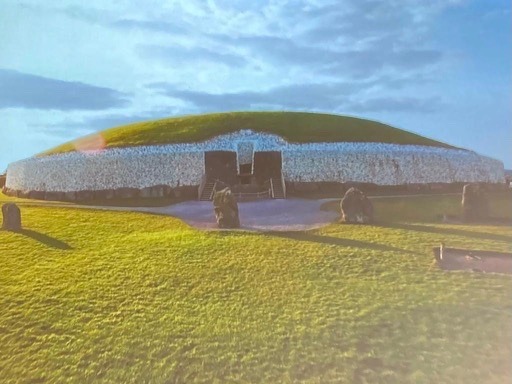
Buom yn Iwerddon yn ddiweddar. Gweld Newgrange oedd y prif reswm, rhywbeth dwi wedi bod eisiau ei wneud ers lawer dydd. Cafodd ei adeiladu tua 5,000 o flynyddoedd yn ôl. Siambr claddu gyda choridor hir o dan pentwr o gerrig tua 200,000 tunnell ydy Newgrange. Rhaid oedd cerdded 20 llath i gyrraedd y man sanctaidd yn y canol. Mae sefyll yn ddistaw mewn tywyllwch du bitsh yn y siambr mewnol yn ei grombil a gweld stribedyn o oleuni yn ymestyn yn raddol ar draws y llawr (fel mae’r haul yn ei wneud ar un bore yn unig bob blwyddyn, sef byrddydd gaeaf) yn brofiad bythgofiadwy.
5 notes
·
View notes
Link
This report covers issues women and gender minorities who are from marginalized races experience, including access to healthcare, institutionalization, access to services during natural disasters, and violence against them.
14 notes
·
View notes
Text
rydych chi'n cerdded i mewn i'm fflat ac yn dod o hyd i luniadau o'r demolition lovers ym mhobman
3 notes
·
View notes